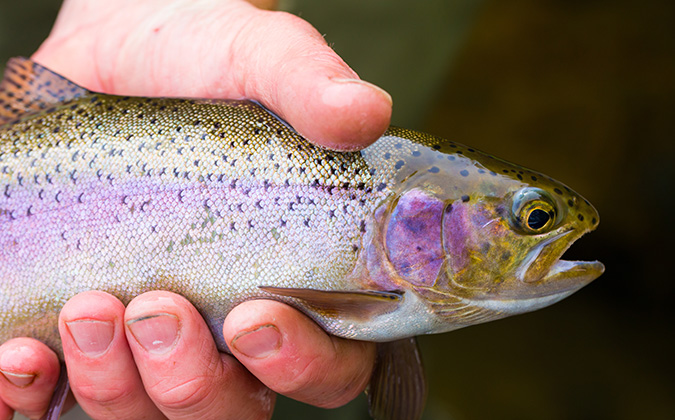
Visual indicators fall short in assessing anesthetic effect on fish
Visual observation is inadequate to assess whether anesthetics have rendered fish unconscious, leading to potential welfare risks, according to research in Sweden.
Anesthetics are used in aquaculture when fish need to be transported, vaccinated or otherwise handled, with visual assessments based on factors such as loss of balance and movement generally used to judge whether fish have been successfully sedated.
Researchers at the University of Gothenburg tested whether rainbow trout were unconscious after doses of a number of commonly used anesthetics, using a novel device featuring a silicon cup with attached electrodes that, when put on fish, can measure brain activity.1
Fish were placed in a tank in darkness, with a flashing light used to test what are known as visually evoked responses (VERs). Only when these responses had disappeared could the fish be said to be truly unconscious. A camera above the tank allowed the scientists to visually observe the fish.
Mismatched signs pose welfare concern
The work showed significant mismatches between visual indicators and the loss of consciousness, Nicklas Wallbom, who led the research, told delegates at the Aquaculture Europe conference.
“The most notable mismatch was seen between VERs and a loss of balance…in that case, it takes less than a minute for the fish to lose balance but 3 to 7 minutes before they lose their VERs. So that’s clearly not an accurate indicator,” he said.
“This just goes to show that anesthetizing fish can be a significant welfare hazard if you use visual indicators alone.”
The biggest mismatch between loss of visual signs and loss of VERs occurred when testing a product using the active ingredient metomidate hydrochloride, he said.
Clove oil and isoeugenol presented a different challenge. Applying the compounds led to fish losing VERs while still observably conscious, while some also reached consciousness before their VERs returned during recovery from anesthesia. This may mean that these anesthetics interfere with visual processing in rainbow trout, he explained, and as such, could rule out the use of VERs to determine unconsciousness when using them.
A recent study which suggested that rainbow trout may be able to perceive their surroundings for several minutes after CO2 stunning2 was also cited by Wallbom, further underlining the need for better protocols to avoid exposing fish to unnecessary pain and suffering.
Whilst the link between consciousness, nociception and pain perception in fish is still something of contested area3,4, Wallbom’s work highlights important considerations regarding anesthesia practices of fish in both research and aquaculture.
1 Bowman J, Hjelmstedt P, Gräns A. Non-invasive recording of brain function in rainbow trout: Evaluations of the effects of MS-222 anesthesia induction. Aquac Res. 2019;50:3420-3428.
2 Bowman J, Nuland N, Hjelmstedt P, Berg C, Gräns A. Evaluation of the reliability of indicators of consciousness during CO2 stunning of rainbow trout and the effects of temperature. Aquac Res. 2020;51:5194-5202.
3 Rose JD. 2002. The neurobehavioral nature of fishes and the question of awareness and pain. Rev Fish Sci 10:1-38.
4 Sneddon, LU. 2009. Pain perception in fish: indicators and endpoints. ILAR journal, 50(4), pp.338-342.






